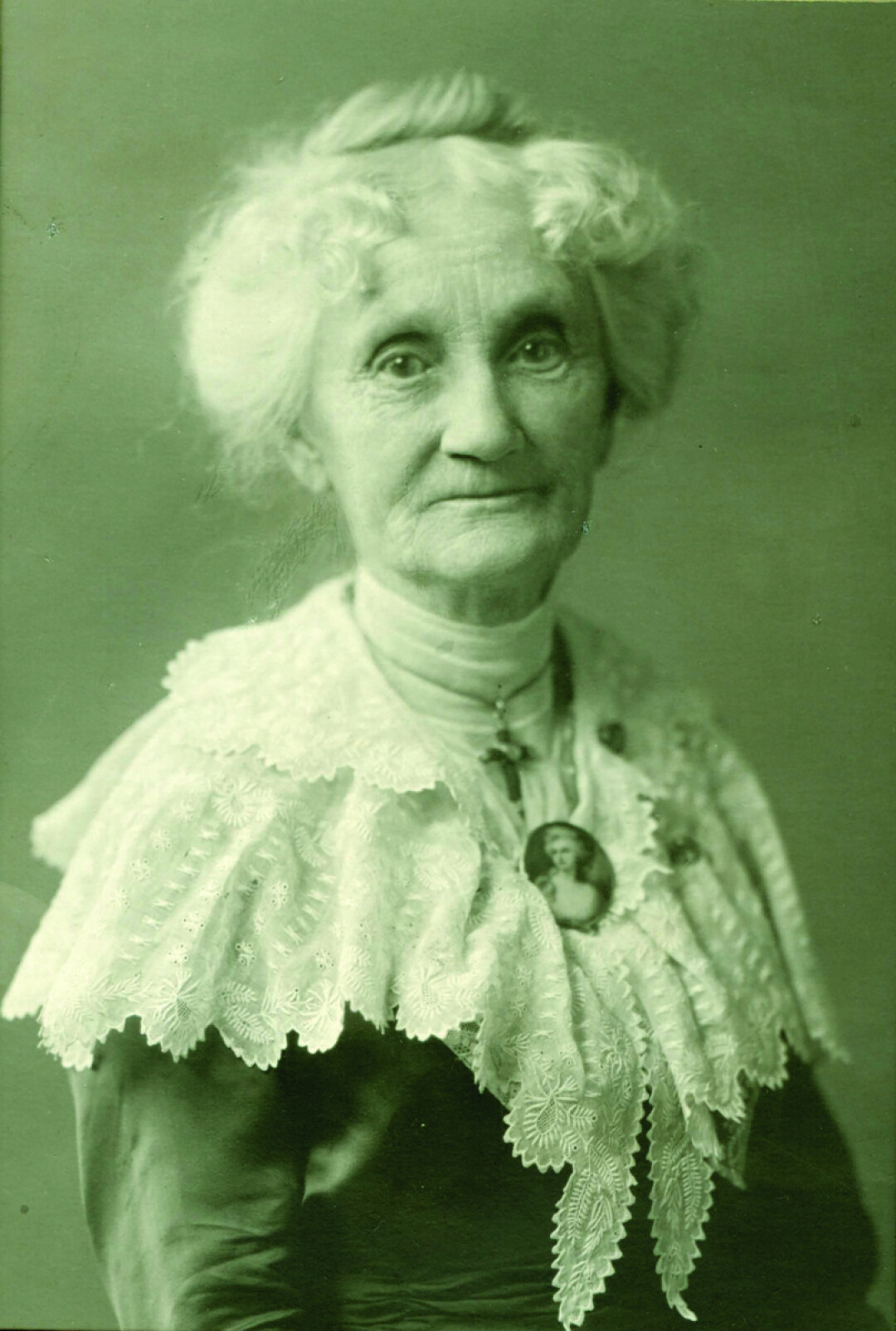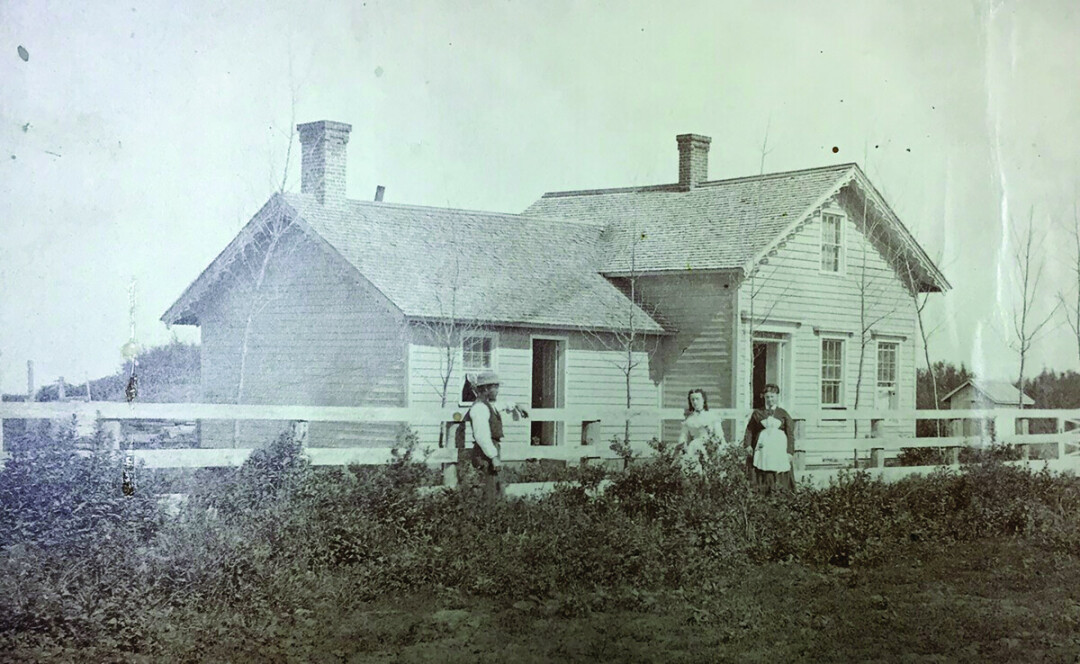Rosa Beall: A Founding Mother of Bozeman
Crystal Alegria | Monday May. 1st, 2023
Rosa Beall is remembered as the first non-native woman to settle in the fledgling town of Bozeman, in 1864, but we would do Rosa a great disservice if we let her story end there. Contemporaries of Rosa’s urged her to write her life story, declaring it “stranger than fiction.” Rosa never wrote her story in its entirety, but we are lucky to have a few of her reminiscences. From these writings, we can glean a little of the life and times of a woman who represents the many women who traveled to Montana Territory in the 1860s. Rosa went through hardship and heartbreak, probably much more than we know. Yet, she managed through it all to become a leading citizen of Bozeman, and is honored as a founding mother.
Rosa Barker was born into a well-to-do merchant family in Collinsville, New York in 1838. She was one of eight children; being the second to the oldest, was given responsibility of her younger siblings. In her twelfth year, her family moved to Cold Brook, New York, where she was educated at Fairfield Seminary. While attending Fairfield, Rosa became interested in drawing, painting, music and French, but did not take a liking to mathematics or science. After graduating from Fairfield and teaching piano for a year, Rosa married Abram H. Van Vlierden in 1856 at the age of 18. For years, Rosa and Abram traveled from place to place, never settling down for long. Rosa had two girls during this time, Lola in 1859 and Minnie two years later in 1861.
In 1861 or 1862, during the Civil War while the family was traveling to St. Louis, Rosa had a “war experience.” The river steamer on which they were traveling was seized by Union soldiers. The steamer was held up in Lexington, Missouri until after the battle of Lexington, during which the hemp warehouses and other buildings were burned. Rosa and her family were kept on board the steamer and treated as prisoners of war. The steamer eventually carried Rosa and family to St. Louis after unloading the Confederate prisoners of war in Alton, Illinois.
In 1864, the small family decided to travel west via wagon train. They left from Grinnell, Iowa, traveling with the Townsend train, following the Bozeman cut-off promoted by John Bozeman. As Rosa and members of the wagon train came through the Bozeman pass on August 1st of 1864, she noticed the “loveliness of the valley” with the grass “as high as the backs of the oxen. Antelope fed in numbers upon it, unseen except when they raised their heads.”
Rosa, Abram and their two little girls settled north of Bozeman on land offered by William Beall, Rosa’s future husband. In the beginning, they lived out of the “double-decker” wagon they used to travel across the plains. The wagon box was their home for three months while Abram built a sod cabin. The family lived without luxuries that first year; their meals consisted of bread, bacon, rye coffee and wild game. The next summer, Rosa planted a vegetable garden and raised potatoes, turnips, radishes, onions, and other vegetables.
Life was never dull for the young family. While Abram was gone one evening, a pack of wolves found Rosa and the two girls alone in their wagon box. Rosa surrounded herself and the girls with trunks but, “The howling wolves outside leaped higher and higher, until it seemed as though the next moment would surely bring them over the barriers.” Abram finally arrived home and was able to scare off the wolves.
Life was hard during these early years in Bozeman. It’s difficult to determine the couple’s financial situation, but we know that Abram had legal troubles. Records indicate that between 1866 and 1867, Abram was sued by a man named Samuel James. In the end, the court sided with Abram, but this must have caused stress for the young couple. Three years after Rosa and Abram moved to Bozeman, the couple separated for reasons unknown. A contemporary of Rosa’s, Mary Alderson, writes in a newspaper article published in 1893, “What should be woman’s highest opportunity soon became her saddest experience . . . domestic troubles, the result of an ill-sorted marriage, in the choice of which the young girl of eighteen had but little to do, led to Mrs. Beall’s separation from her husband on January 1st, 1867. That separation was justifiable on the lady’s part, no one who knows Mrs. Beall will question. She secured a divorce the following fall.” The divorce was approved, as was mandatory at that time, by the Legislative Assembly of the Territory of Montana on December 21, 1867.
With the separation, Lola and Minnie, now eight and six, were placed in the home of mutual friends until it could be decided who would care for the girls. This must have been devastating for Rosa, but things proceeded to get worse. Without Rosa’s knowledge, Abram took the girls and headed east. Rosa, without the means to travel, knowledge of where Abram had taken the girls, nor any legal recourse, was unable to go after them. One year after the girls’ abduction, Minnie, the younger of the two, contracted diphtheria and died. Lola died the next year of heart disease. Rosa must have been heartbroken. It states in reminiscences, “The loss of her children was a shock from which Mrs. Beall has never recovered.” Years later, in 1880, Rosa was able to travel east and remove Lola’s body from Toledo, Ohio to the Woodstock cemetery near Saugerties, New York where Minnie was laid, therefore reuniting the two girls.
With the separation from her husband and loss of her children, it was a desperate time for Rosa. She was financially destitute and needed an income, so she started sewing for a Mrs. Meredith. She also sewed flour sacks for the local mill at ten cents per bag. She often finished 100 bags a day, earning $10, a good amount of money at that time.
With few women in Bozeman during those early days, it’s not surprising that Rosa married again quickly. In November of 1868, Rosa married William Beall. William built a new house for Rosa and himself at 415 North Bozeman Avenue, where Beall Park is now located. William died in 1903, but Rosa continued to live on North Bozeman until 1920. Rosa moved into the Evergreen apartments on Koch Street and lived there for ten years until her death on April 16, 1930. Rosa died at the age of 91, the cause being carcinoma of the uterus, with senility a contributing factor. Her longtime friend, Lina Houston, was with her when she died. Rosa was laid to rest next to her husband William in Sunset Hills Cemetery, where you can visit them today.
Mary Alderson, a contemporary of Rosa’s and a leader in the suffragist movement in Montana, wrote an article in the Avant Courier newspaper in 1893 that focused on Rosa’s character and life. In the article she provides a biographical sketch, but, more importantly, she gives us a peek into Rosa’s personality. She begins by telling us that Rosa is “an energetic worker, yet her temperament and ideality lead her at times into the sphere of the dreamer.” She goes on to say that Rosa in her “impulsive way” often says, “It seems at times as tho’ my whole life had been spent in building air castles, all of which have fallen down.” Mrs. Alderson paints a truthful picture of this pioneer heroine, not adding to the already built-up image of homesteaders as gritty, sturdy individualists overcoming odds in the wilderness. She goes on to say, “It is Mrs. Beall’s high ideals, conscientiousness and extreme sensitiveness that often make her endeavors appear insignificant to her and make her easily depressed. With her intense nervous temperament, she at times soars up Mount Delectable into the clouds, where all is resplendent, and again descends into the Slough of Despondence, where it sometimes seems to her that her whole life has been a mistake.”
We are lucky to have this description of Rosa by her friend Mary Alderson. The historical record does not always capture the personality of an individual, especially a woman during this time.
By the end of her life, Rosa had become a celebrated pioneer of Montana. There were many luncheons held in her honor, celebrating her as the first woman to settle in Bozeman. From Mary Alderson’s description, we can see that Rosa doubted her significance, even when the town applauded her role as a founding mother. Today, we look at this woman who came before us and admire not only her bravery in fighting off a pack of wolves, but her spirit, endurance—and her vulnerability.
| Tweet |
